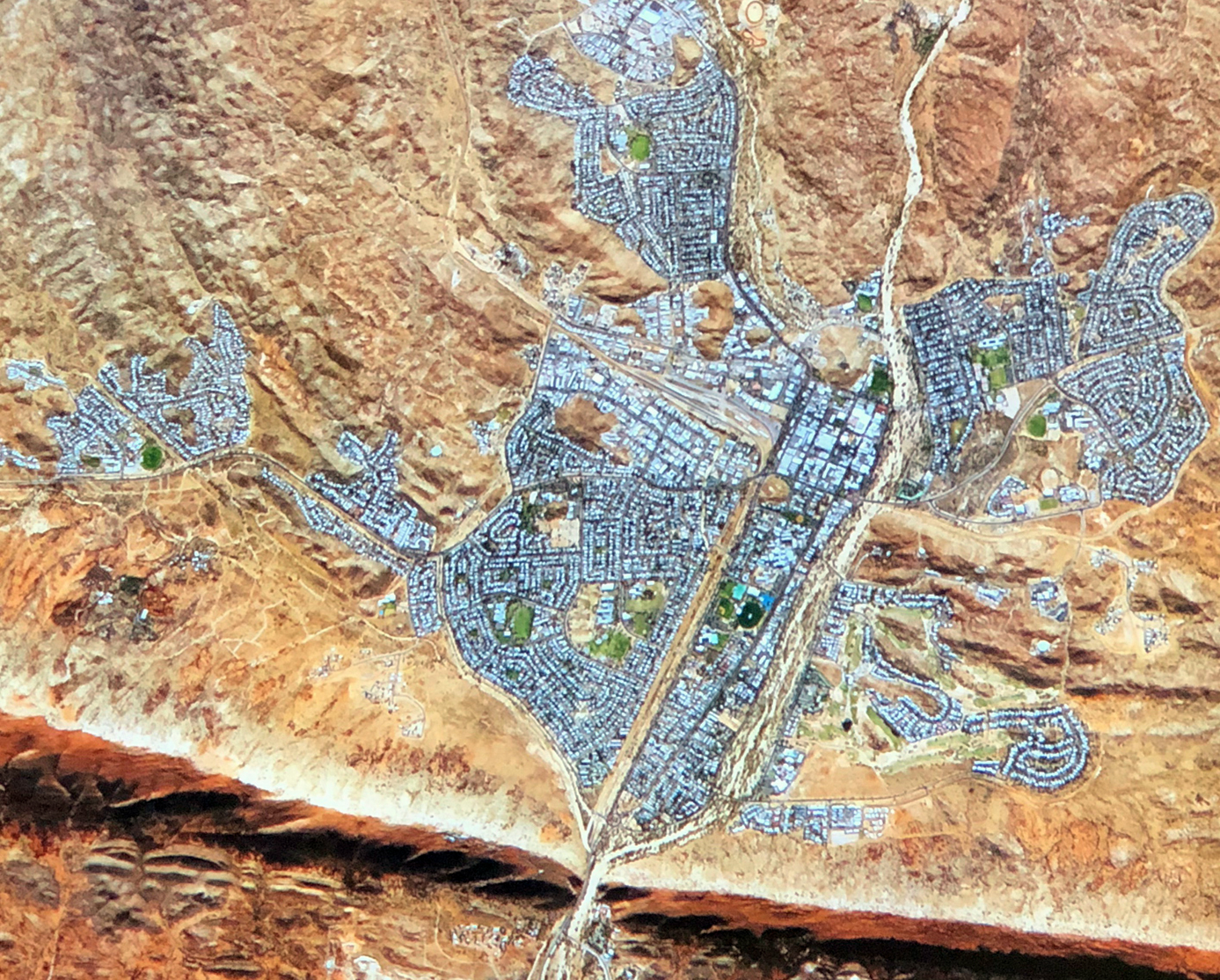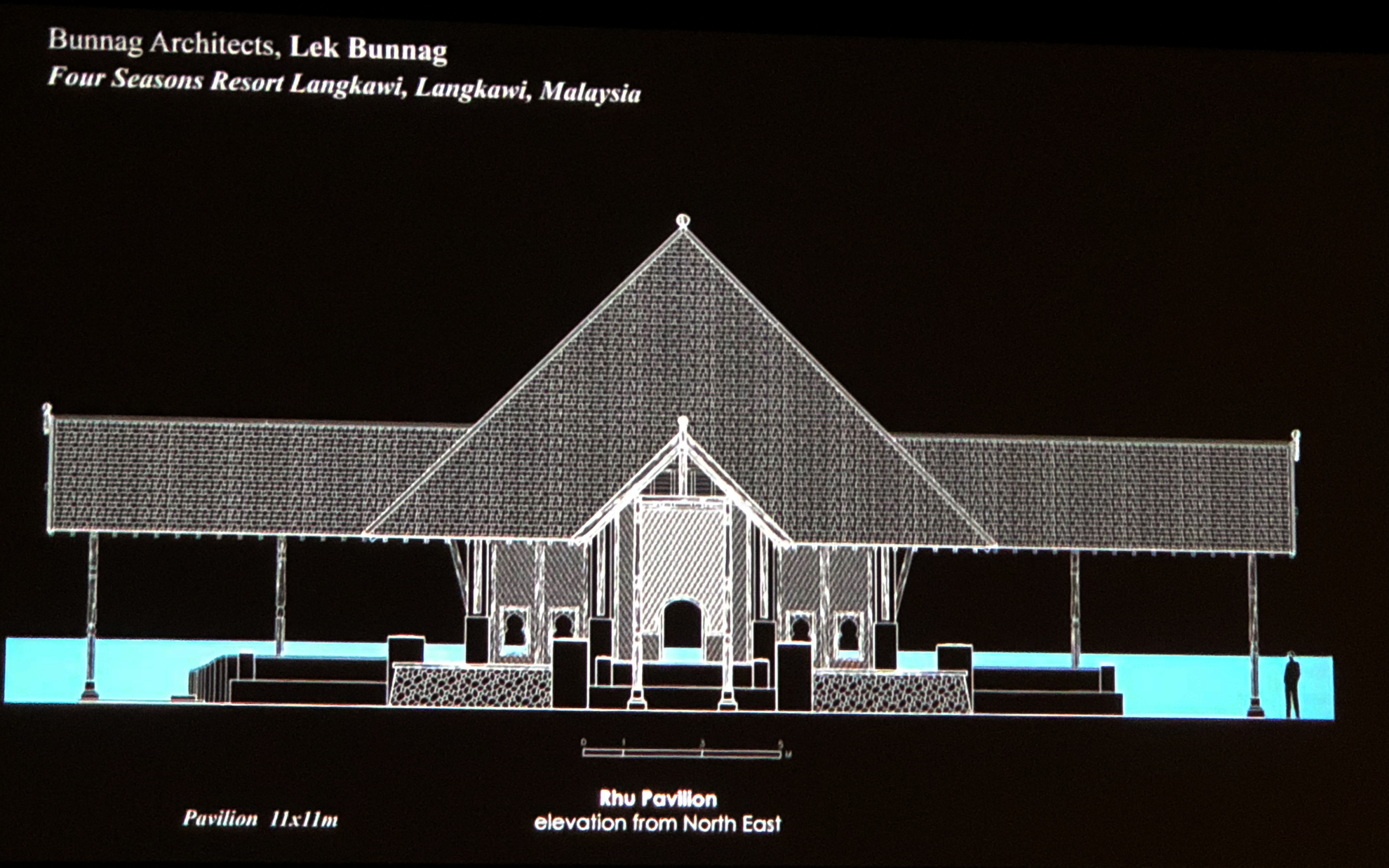Day two of the 2018 Australian Institute of Architects National Conference promised further interrogation of the idea of edges in architecture and our built environment.
If you missed day one highlights click here to start at the beginning
Sue Dugdale
(Review Chelsea Doorne)
Coming from Alice Springs, Sue Dugdale explored a different more nuanced type of edge by investigating an edge defined by ‘urban anxiety’. Following a diagnosis of the urban condition of Alice Springs and a considered reference to the novel ‘The City and the City’ by China Mieville, the concept of Alice Springs existing within itself informed the breakdown of projects presented, straddling the population of the local indigenous and the ‘white fellas’ who know they’re always able to use their ‘exit strategy’ and leave.

Alice Springs Aerial photo
The design of the Greenwell building was one which considered and responded to the domination of car parking as a land use in Alice Springs (a massive 40% of the township footprint). It was also designed to be adaptable to the future needs of the city. The design of the North and South facades enable them to be modified or entirely sacrificed should there be greater development in the area. In a remarkable reflection, it was still a project, in Dugdale’s own words, that does not offer much to the indigenous residents of the town. The projects which bridge the ‘two towns within the town’ focus on the identity specific to Alice. From the Kilgariff Fence Project, which used the graphic of the Bush Passionfruit to the nondenominational Alice Springs Garden Cemetery Chapel which can be used by all residents of the town.
The final group of projects presented were created to respond to a wider range of people. References to indigenous culture were evident in the ancestral hawkmoth canopies designed for the CBD revitalisation and in the caterpillar seats. These projects exemplified the architect’s role in consulting and engaging with all aspects of the community, with the caterpillar seating even designed to provide the local skateboarders with the perfect angles for skating. Overall, this presentation was thoughtful and perfectly demonstrated Sue’s love of her urban place and how architecture can respond to a deep responsibility to the land while addressing a very different type of edge.
Hiroko Kusunoki and Nicolas Moreau
(Review Chelea Doorne)
Hiroko Kusunoki and Nicolas Moreau of Moreau Kusunoki started their presentation by explaining their focus on materiality, sustainability and the in-between space. With a portfolio which is seemingly dominated by competition entries, it was clear that these themes in their work are not only consistent, but sensitively considered to the site and brief. Their entry for the House of Cultures and Memories of French Guyana reflected on the history of the site and its location, situated on the edge of a tropical swamp. Referencing the colonial military hospital which once stood on the site, a strong reference to woodcraft and the concept of basic shelters was evident through the use of louvres, courtyards, and verandas. They alluded to the astonishing fact that 45% of the population was below 20 and the subsequent challenge to explain to them their identity and existing background. However, there was little explanation into how the design enabled this.
The presentation tended to follow this pattern of presenting phenomenally beautiful images of architecture that appeared to be sensitive and considered but with a heavy reliance on the images to convey their thought processes behind the design. Their winning entry into the Guggenheim Helsinki competition had a considered quality in not only the design and the drawings, complete with hand drawn sketches depicting the cake filled thoughts of visitors to the gallery. Their stunning use of materiality was evident throughout their projects and the sensitive nature with which they approach a brief provided a small insight into why the firm has had such success in only 7 years. However, it did leave a wanting for an explanation of how these projects identified the edge and responded to the conference theme.
Sarah Manning
(Review Michael Smith)
The session after lunch on the second day is always a challenging spot for a speaker. Fortunately it was given to Sarah Manning from the multidisciplinary UK practice Space Agency to keep the audience focus. The inclusion of Manning in the speaker line up was an inspired choice. The theme of edge was explored from a practice which often operates as an intermediator between the user and architecture. It is at the very edge of architecture where people engage with it through wayfinding, signage and graphics that help give a place an identity.
The presentation explored a variety of projects across the globe where Space Agency had been engaged to work with the architects to improve the user experience. Just like with architectural design, user interface design including wayfinding, signage and logo design must start with in depth research to ensure that the outcome is culturally appropriate and anchored. Once again the importance of design being locally responsive rather than internationally uniform was readily apparent.
While captivated by the beautiful graphic responses for place making by Space Agency, It was also interesting to see how graphic design, logo design and wayfinding has become an integral part of megascale projects. This makes inherent sense for an international stadium precinct or a shopping centre but it is clearly creeping into other typologies as well. Do we need or want our motorways to have their own logos? Where do we draw the line? Where is the edge?
Lindy Atkin
(Review Chelsea Doorne)
Lindy Atkin was the sole practicing representative of Queensland for the conference. Her presented portfolio of work framed her response to the edge as an interval while responding to a tropical climate. The idea of edge was explored through a range of projects, from the destruction and subsequent re-construction of her personal home, to the installation of art projects both locally and interstate. This integration of architecture, art, and culture was a consistent theme in the presented projects with the residential Spoonbill House which was designed not only around important trees on the site but a phenomenal piece of art to be housed within the spaces.

‘Lek’ Mathar Bunnag
(Review Michael Smith)
The final speaker of the conference was ‘Lek’ Mathar Bunnag from Thailand. His unorthodox presentation style and use of humour had the audience both laughing and intrigued. Bunnag’s work was focused on the holiday resorts of South East Asia. These tourist resorts had little in the way of precedent to draw upon and as such Bunnag took inspiration from both nature and traditional vernacular architecture to drive his design work. What became apparent through the presentation was the use of techniques more common to sacred spaces than hotels. Reflection pools and the use of formal symmetries in the buildings, dramatic skylights and domed ceilings all found their way in to the tourist resort architecture. As a result these places appear to carry with them a seriousness that would demand hushed tones and slow movement. A tranquil place that would feed your soul but might become overwhelming for the extroverted.

The recurring theme of local versus international was challenged in a new way with Bunnag’s work. On the one hand, traditional techniques and from across East Asia were utilised throughout the projects. On the other there was a sense that this body of work was taking a grab bag of ideas from various Eastern Asian cities and cultures from Java to Kathmandu and then rolling them out at whim. How connected the architecture is to place was perhaps uncertain, but the architecture itself made for a visually stunning conclusion to the conference
Reflecting on Edge
Despite the name and theme being Edge, this conference was really about place. How to connect to it, how to embrace it in design and how important it is to not lose it when we make changes to our built environment. At the end of the conference it was interesting to see which ideas were discussed and which were all but ignored. Humanity’s continued rapid urbanisation and architecture at the scale of mega project were covered well, however our existence on the edge of a climate disaster was barely mentioned. There was also surprising little to be said about the host city of the Gold Coast.
Whilst the creative directors Wei Jien, Barry Lee and Brett Saville did an excellent job of selecting some fantastic speakers, it would have been a richer experience to hear some more thoughts from them. Engaging an MC for the event was an opportunity lost for the creative directors in introducing the speakers. The wrap up at the end of each day was also limited to a single thought from each director, which prohibited a deeper interrogation of ideas.
The National Conference is always an intellectually stimulating place to be as an architect and this year was no exception. The value is in being exposed to different ideas and design knowledge from across the globe and then apply this experience to your own design thinking and processes.
Architecture is for everyone.
Contact Us
Feel free to contact us with questions or feedback:
Latest Post
- A crisis of trust February 10, 2020
- The Square and the Park. October 28, 2019
- Fixing The Building Industry – A Wishlist September 12, 2019
- 2019 NATIONAL CONFERENCE DAY 2 June 24, 2019
- 2019 National Conference Day 1 June 22, 2019



Leave a Reply